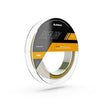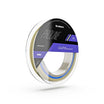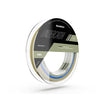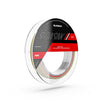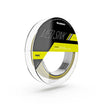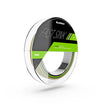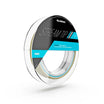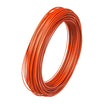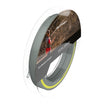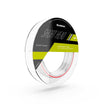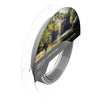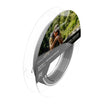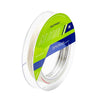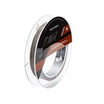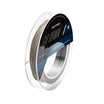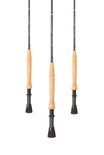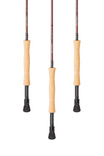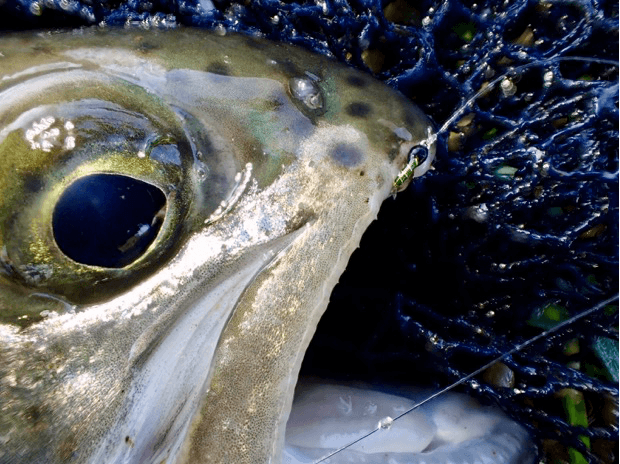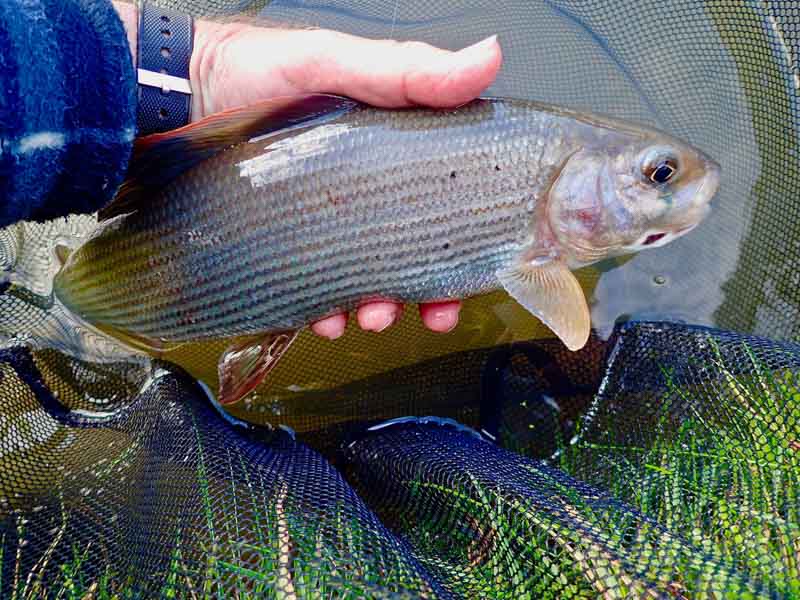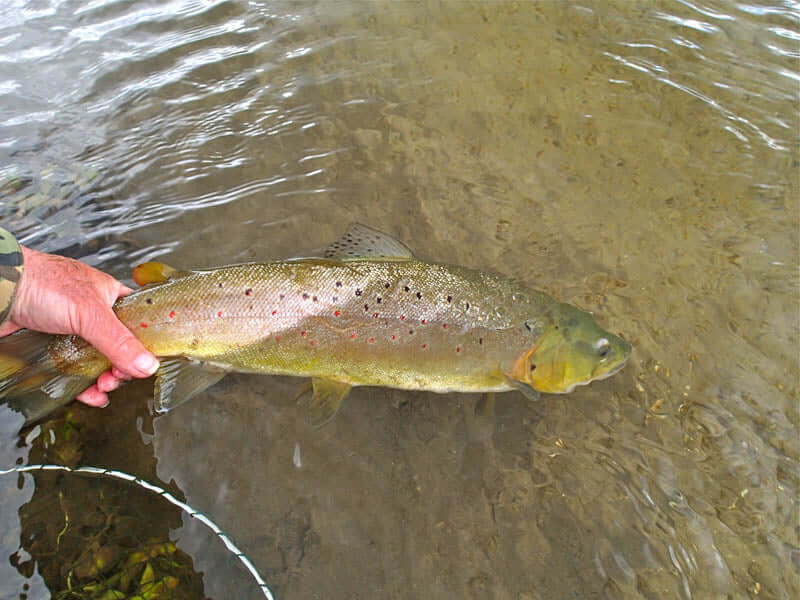by Dave Southall
Many of the waters that I fish hold what I would term ‘Well Educated Fish’. Now there are two very different types of educated fish, ones that I hate & ones that I love. Let me explain.
The ones that I hate are freshly stocked trout from a fish farm. They have been educated all of their lives to recognize humans as a source of food, so no caution is required for the angler to get close to the fish (freshly stocked trout will actually come towards the angler to see if he or she has some food). They have learned to associate splashes with food being thrown into the stock pond, so as a result clumsy casting & one of their shoal members thrashing about on the end of an anglers line excites them into a feeding frenzy. They have been bred to feed aggressively & to behave as shoal-fish, unlike wild trout that are very territorial (except for when there is a glut of food). Furthermore once stocked into the river, having been brought up on pelleted food, they have to learn what is edible so will ingest anything that might be edible including cigarette ends, bits of twig & grass seeds, all of which I’ve found in the stomachs of stocked fish, so virtually any fly will do. In addition these, often big, stocked fish compete with the wild fish & even eat many small fry trout & grayling, thus reducing the wild population. The stocked fish in rivers seem to rarely survive/remain in the river for more than 12 months so the river ends up depleted of wild fish making stocking essential the following year. Stopping stocking has dramatically improved the fishing on several rivers that I fish, particularly the grayling fishing. In my opinion stocked trout should only be put into waters that are unable to support a self-sustaining population of wild fish. Their only real value is that in small still waters they are a means of introducing newcomers, who lack many of the skills required to catch wild fish, to the joys of fly fishing by giving them the encouragement derived from catching a few fish.
However, stocked trout do eventually learn what wild food is & in ‘catch & release waters’ that are heavily fished & stocked infrequently they can become highly educated, sometimes making them virtually impossible to catch. They do not usually become wary of anglers on the bank, but they do become very wary of regularly used fly patterns & of any fly that is presented badly/unnaturally. So they can present a real challenge. For example on my local small still water near Driffield, East Yorkshire, it can be many months between stockings & the rainbows eventually become very challenging when they have been repeatedly caught on Blobs, big Bloodworms, Cats Whiskers etc. which they learn to avoid. Many of these fish become focused on tiny, natural food items, Bloodworms 7mm long, Buzzer pupae less than 4mm long & Daphnia 1mm big! Furthermore this lake is like a U-shaped canal & it has a distinct flow. These fish never learn to avoid natural food so a suitable imitation, well presented, will not be refused. When fishing with a size 24 to 30 CdC Midge or a size 24 to 30 Buzzer Pupa the fly must drift absolutely drag-free. When fishing a Buzzer pupa ‘on the drop’ it must sink absolutely vertically which requires a Dump Cast to pile tippet on top of a fly-first presentation. If the fly sinks across the flow on a tight tippet it will be completely ignored. Even with extremely long fine tippets getting a perfect presentation is virtually impossible, as is the hyper-accurate casting needed with such tiny flies. Wild trout are normally very different from their stocked cousins. They are not inbred to ensure that they have the traits of aggressive, social feeding & fast growth. They have learned all their life to avoid any possible predators including humans & they have learned from hatching what is natural food so are less likely to be fooled by flies that look more like Christmas decorations than any natural food. As a result great stealth is required when approaching them & generally more imitative fly patterns. On heavily fished waters wild fish can become highly educated & very difficult to catch. They can become habituated to people & therefore far more tolerant of humans. However they are often far fussier about the artificial flies that they will take & particularly about the presentation. I well remember a day in September 2009 on Yellowstone, Wyoming’s Soda Butte Creek that gets very heavy ‘catch & release’ fishing pressure. A guide & his 4 clients had just fished through a pool above me. Much to my surprise the cutthroat trout were still rising steadily to small Olives. I discovered that I could wade to within 20’ of the rising fish without putting them down. However they proved to be no easy-catch. My fly had to drift without a trace of micro-drag before they would take it. Often I made 30 to 40 casts before a fish was fooled. I even watched fish rising to a natural fly turn away when a puff of wind pushed the natural Olive sideways.
On my local Pickering Beck the section below the town of Pickering is heavily fished & the fish are surprisingly tolerant of anglers but very wary of Gold Bead-head Nymphs but happy to take more natural Black Bead-head Nymphs, whilst the fish in the wilder, less-fished water above town are far more spooky & prefer flashy Gold Bead-head Nymphs to those tied with black beads.
Fish may have incredibly small brains & are certainly incapable of thinking logically, but they can learn to avoid unpleasant stimulae, such as being repeatedly caught on a particular fly pattern, particularly if it does not accurately resemble a natural food item. Grayling will soon learn to avoid bright Pink Shrimps on waters where they are often used but are far less likely to learn to avoid naturally coloured Tan Shrimps. Which brings me to another point worth making. Fish, particularly shoal-fish like grayling, can learn from their near neighbours. When one or two fish in the shoal have been caught, or pricked, whilst using a particular fly pattern, they seem to be able to let the rest of the shoal know to avoid that pattern, yet a change of fly, sometimes just a slight change such as a different bead colour on a nymph can result in continued success. I am a great believer that good presentation is often far more important than fly choice, but there are many times when fly choice can be just as critical as good presentation.
I love the challenge that well educated fish present me with even though they can be very frustrating at times. When my local highly educated small still water rainbows are really fixated on micro-buzzers a friend describes it perfectly, he’ll say “I had to go down to a size 30 & even then it was a thousand f…in’ casts for an f…in’ fish!!!!!!” Nevertheless, it is incredibly rewarding to know you’ve finally fooled a really difficult fish.
The reason I love Tom’s Sunray gear is that thanks to the micro-thin, delicate presentation 0 weight & 1 weight Jeremy Lucas lines & Micro Nymph line teamed up with his 7’ 6” 2 weight Microlite, 10’ 2 weight Volition, 10’ 6” ZERO 0 weight & 10’ 4 weight Microlite rods with their precise casting & forgiving actions, plus long leaders, I can obtain outstanding presentation of my flies.



